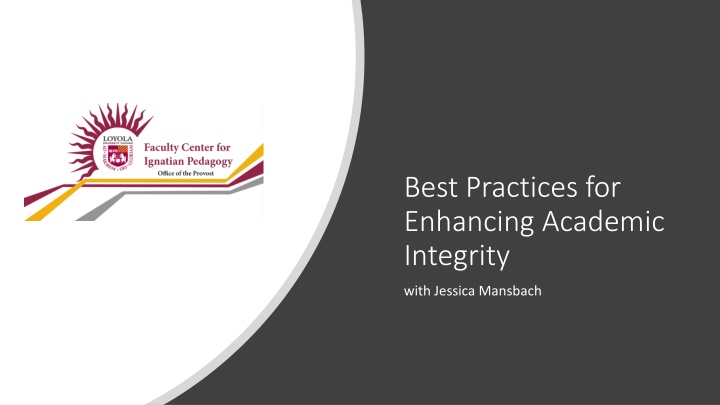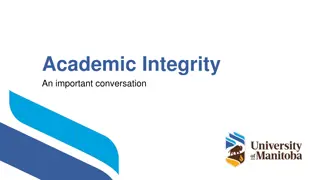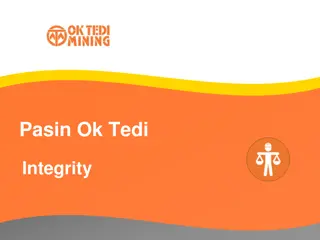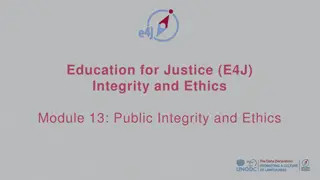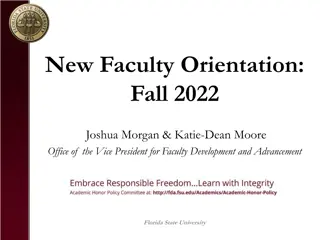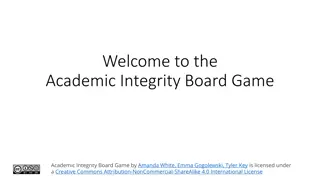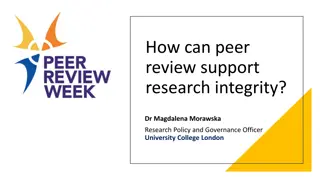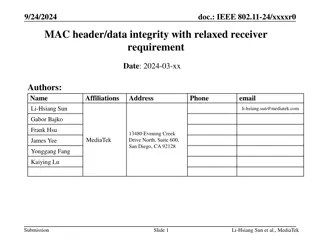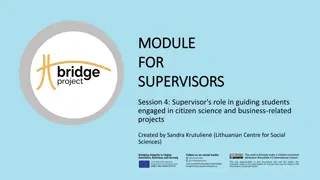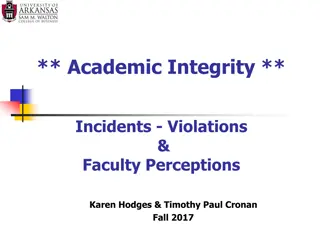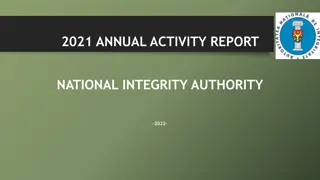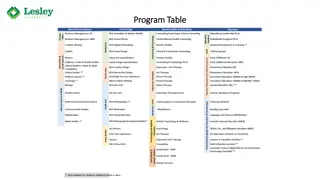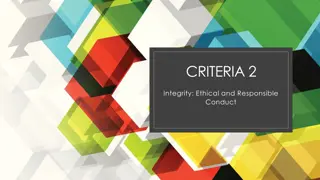Best Practices for Enhancing Academic Integrity
Promoting ethical behavior & respect in academic settings, this session covers defining academic integrity, instructor responsibilities, and fostering a culture of honesty. Explore the importance of academic integrity and strategies for educating students effectively.
Download Presentation

Please find below an Image/Link to download the presentation.
The content on the website is provided AS IS for your information and personal use only. It may not be sold, licensed, or shared on other websites without obtaining consent from the author.If you encounter any issues during the download, it is possible that the publisher has removed the file from their server.
You are allowed to download the files provided on this website for personal or commercial use, subject to the condition that they are used lawfully. All files are the property of their respective owners.
The content on the website is provided AS IS for your information and personal use only. It may not be sold, licensed, or shared on other websites without obtaining consent from the author.
E N D
Presentation Transcript
Best Practices for Enhancing Academic Integrity with Jessica Mansbach
Plan for the Session Intent of Session Intent of Session Plan for session Plan for session Review definition of academic integrity After I define academic integrity, there will be three sections of the presentation (educating students, designing assignments, designing exams). We will also review sample assignments and sample exam questions Discuss instructor's role in educating students about academic integrity Discuss instructor's role in designing thoughtful assignments & exams After each section, you will be invited to participate via chat.
What is academic integrity? "a commitment, even in the face of adversity, to six fundamental values: honesty, trust, fairness, respect, responsibility, and courage. From these values flow principles of behavior that enable academic communities to translate ideals to action" (International Center for Academic Integrity) Loyola s Statement genuine learning community to give proper recognition to other sources .both an act of personal, professional courtesy and of intellectual honesty
Promote ethical and honest behavior Recognize others intellectual property Why is academic integrity important?
What are my responsibilities as an instructor? Educate students DESIGN THOUGHTFUL ASSIGNMENTS & EXAMS
Educate students about academic integrity Include a statement regarding academic integrity in your syllabus Provide students with resources they can use to learn about academic integrity (e.g., Academic integrity quiz from University Libraries) Share information about where students can get academic support (e.g., the Writing Center, University Libraries)
What other examples do people have What other examples do people have related to educating students about related to educating students about academic integrity? academic integrity? Chat
Instructor Responsibilities Well-designed assignments promote academic integrity
What are some features of well-designed assignments? Let's take a look (link to FCIP webpage)
Offer choices Features of assignments that promote academic integrity Give feedback Break into pieces that are assigned throughout the semester Allow students to submit drafts Ask students to reflect on what and how they learned
What strategies do you use to design assignments that promote academic integrity? What ideas do you have about how to enhance existing assignments to promote academic integrity? Chat
Designing exams Ask questions that require students to demonstrate critical thinking or apply what they are learning to a real life situation
Before: What is the first concern of an emergency worker? a. b. C Question Design: Scenario Question After: You arrive at the scene of an accident where people are panicked and yelling. Three people appear to be injured. One person has scrapes and bruises, a second is lying on the ground moaning in pain and a third is quickly losing blood from a skull injury. Which person will you take care of first? From http://theelearningcoach.com/elearning_design/multiple-choice-questions/
Before:What are the components of a computers video system? (Select all that apply.) a. b. c. Question Design: Analysis of Visuals After: Using the repair flowchart shown here, what should you check if the monitor stops working? a. b. c. Note: Assume that visuals are displayed and that they are accessible. From http://theelearningcoach.com/elearning_design/multiple-choice-questions/
Before: What are three signs of edema? Question Design: The Answer Plus The Reason Why After: A patient entered the hospital with edema of both lower extremities. What action should the nurse take and why? From http://theelearningcoach.com/elearning_design/multiple-choice- questions/
Consider Delivery Options Set time limit Randomize order of questions Randomize order of answers Include pre-test warning Access exam once Delay feedback Display one question at a time Adapted from the Office of Online Learning's material on academic integrity This Photo by Unknown author is licensed under CC BY.
What strategies do you use to design exams that promote academic integrity? What ideas do you have about how to enhance existing exams to promote academic integrity? Chat
References Audio Reflection Assignments Help Students Develop Metacognitive Skills Bloom s Question Starters for Higher Order Thinking Do's and Don'ts for Promoting Academic Integrity Using Assignment Choice to Promote Course Relevancy Writing Multiple Choice Questions for Higher Order Thinking
